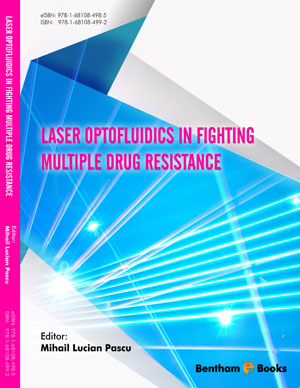Abstract
This chapter presents a synthesis regarding the optical properties of pendant droplets in view of describing and understanding their interactions with laser and, more general, optical beams. The main methods used for pendant droplets investigation are described, from the optical point of view, at unresonant and resonant interaction with a laser beam focused or sent on it. The interaction is considered in the excitation scheme one laser pulse - one microvolumetric droplet in pendant position in air with typical volumes of the droplet in 1-15 μl range. In the unresonant interaction case the laser beam is not absorbed by droplet’s material(s). Beam propagation in droplet is made according to geometrical optics rules when the separation surface between two optical media (air and water, for instance) is spherical. Total reflection of laser beam within droplet at separating surface with respect to the air can be produced and this can give a particular brightness of an illuminated droplet. At resonant interaction, the beam is absorbed by droplet’s material(s) and typical phenomena may take place such as laser induced fluorescence (LIF) emission and Raman scattering. These effects are described here. LIF emitted by microdroplets of Rhodamine 6G solution in water is described and results about its amplification in the droplet considered as a spherical optical resonator are shown to the limit of obtaining lasing effects. Raman spectra of dimethyl sulfoxide and ultrapure water microvolumetric droplets are shown and a comparison between Raman beams emitted by microdroplets and bulky samples is made.
Keywords: Critical angle, Fluorescence, Hanging droplet, Immiscible liquids, Lasing, Laser induced fluorescence, Light pressure, Light scattering, Optical absorption, Optofluidics, Pendant droplet, Raman scattering, Reflection, Refraction, Refraction index, Rhodamine 6G, Total reflection.






















